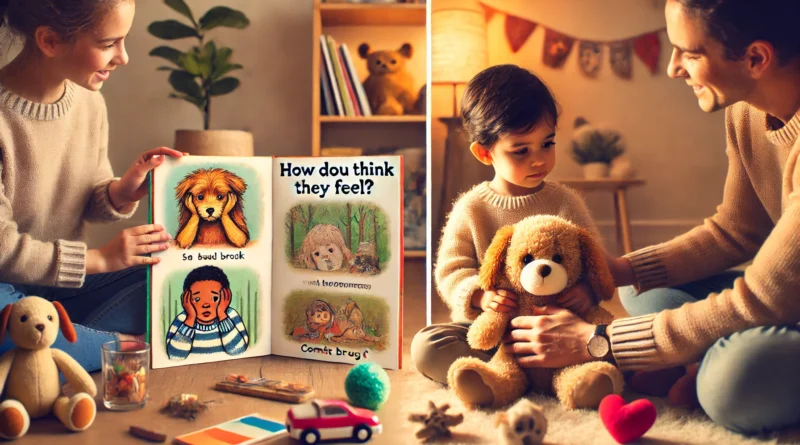How to Teach Young Children About Empathy and Understanding Others
Empathy is one of the most important life skills a child can develop. It helps them recognize how others feel, respond with kindness, and build strong, respectful relationships. While empathy may not come naturally at first, young children can learn it through stories, play, and daily interactions that encourage emotional awareness and perspective-taking.
Why Empathy Matters
- Builds emotional intelligence and compassion
- Strengthens friendships and cooperation
- Reduces conflicts and bullying
- Supports problem-solving and kindness
- Encourages caring actions and social harmony
Option 1: Use Books and Stories to Explore Feelings
Activity Idea:
Read stories where characters go through different emotions—like feeling left out, excited, or nervous.
Pause and ask questions like:
- “How do you think they feel?”
- “What would you do if you were there?”
Draw or act out parts of the story with stuffed animals or puppets.
What Kids Learn:
- How to recognize emotions in others
- The idea of “putting yourself in someone else’s shoes”
- Expressing empathy through language and action
Book Suggestion:
Have You Filled a Bucket Today? by Carol McCloud — a great introduction to empathy and kindness for little ones.
Option 2: Practice Empathy in Real Life and Pretend Play
Activity Idea:
During daily situations, label emotions:
- “Your friend looks sad. What could we do to help?”
- “Your sister is tired. Maybe we could speak quietly.”
Set up pretend play where children care for a sick doll, comfort a crying stuffed animal, or role-play kind gestures.
What Kids Learn:
- That feelings can be seen and responded to
- Ways to comfort others and show care
- That helping makes both people feel good
Tool Suggestion:
Create an “Empathy Toolbox” with cards showing kind actions: give a hug, say kind words, share a toy.
Other Ways to Build Empathy
- Model it daily: “I noticed our neighbor seemed worried, so I brought her flowers.”
- Celebrate caring acts: “That was really thoughtful of you to help your friend clean up.”
- Use mirrors to practice facial expressions and emotional recognition
- Ask reflection questions: “How would you feel if that happened to you?”
- Watch short videos or real-life moments and talk about how the people might feel
Final Thoughts
Teaching empathy is teaching your child how to care. With books, pretend play, and your own example, you help your child understand that their words and actions affect others. As they learn to see the world through kind eyes, they grow into thoughtful, loving humans who make the world better one caring moment at a time.
